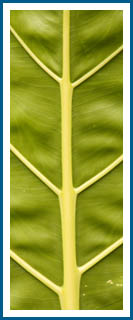
 |
 |
Aloha TeachersThe Waipi‘o Valley Stream Restoration Study project provides a unique opportunity for students to act in the role of scientists in conducting a comprehensive, long-term scientific research study. Working side-by-side with scientists on this landmark study, the students will develop an understanding and abilities in the process of scientific inquiry. The study should be conducted as a mini-unit that consists of classroom lessons (activities and discussions), web activities, research and field study (each student group will go into the field and collect data with scientists). The mini-unit is designed primarily to guide the students in all of the steps of a full inquiry project - identifying the question, designing the investigation, gathering evidence, formulating an answer to the original question, and communicating the investigative process and results. The web site provides a "home base" and sharing forum for the student groups at two schools and scientists who are collaborating on the project. UNIT OVERVIEWThis stream study unit provides a sequence of lesson plans that can be taught over the course of a semester. The unit is designed primarily for use in a middle school science course, but it may also be integrated with social studies and language arts. The unit, as a whole, is a scientific investigation to measure the impact of a stream restoration on stream flow, habitat and biota. The lessons are designed to guide the “student scientists” through a sequence of common steps of a scientific study (based on “the scientific method”), from stating the question and acquiring background knowledge, to analyzing data and reporting conclusions. The students work in teams to conduct the study, and collaborate with scientists and the partner school. As they proceed through the unit, the student scientists record all components of their study (e.g. “Scientific Question”, “Forming Your Hypotheses”) on the Stream Study Report form which is accessible on the study website. In some lessons, students are referred to the study website for readings, tables, photo images, and other resources. |
|
| Copyright © Hawaii Biological Survey, Bishop Museum Site last updated January 2010 |
||